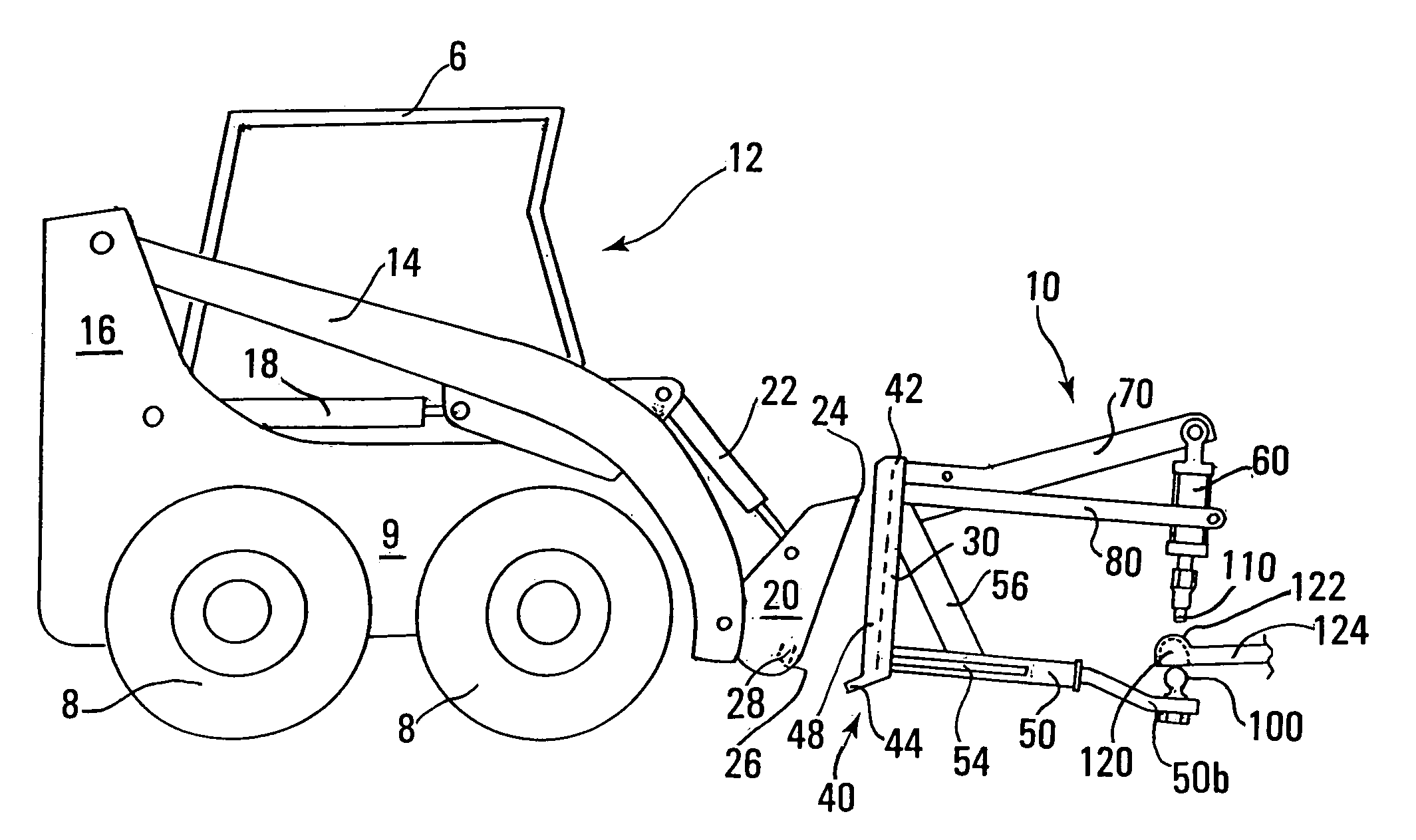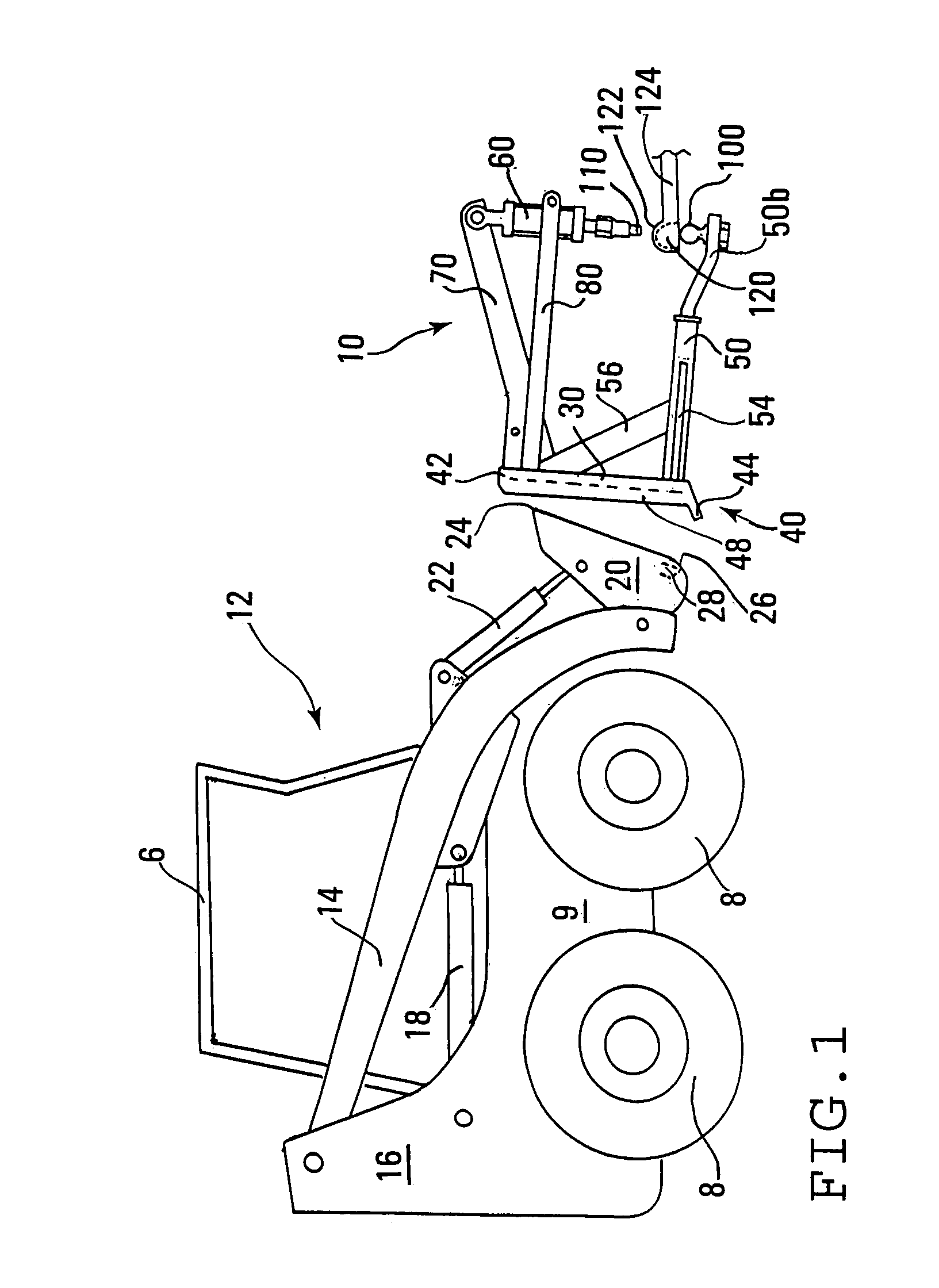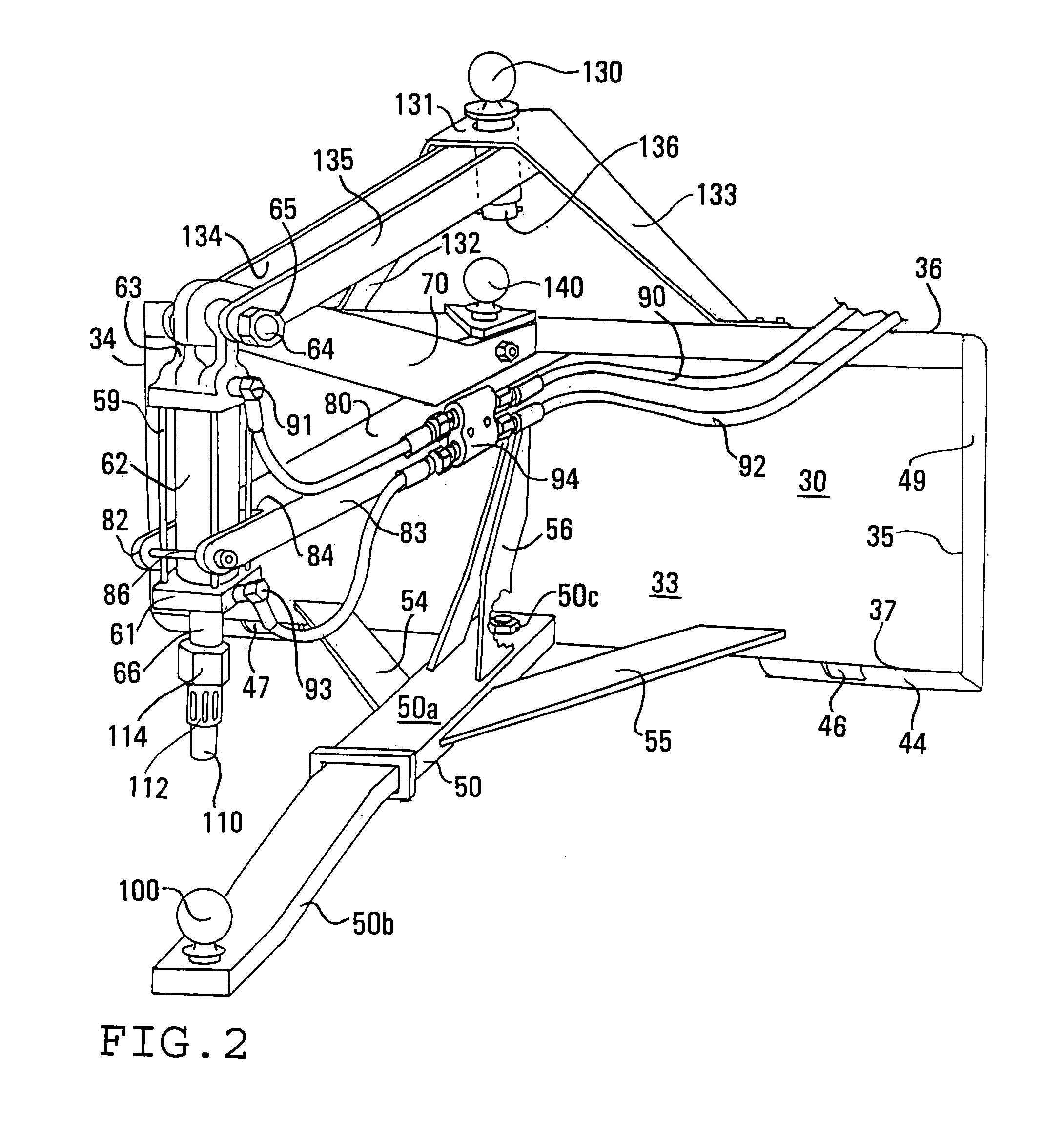Pressure hitch
a technology of pressure hitch and spherical plate, which is applied in the direction of lifting devices, soil shifting machines/dredgers, transportation and packaging, etc., can solve the problems of difficult and even clumsy, inconvenient operation, and inability to use the same size and style of design for ball and socket hitching components
- Summary
- Abstract
- Description
- Claims
- Application Information
AI Technical Summary
Benefits of technology
Problems solved by technology
Method used
Image
Examples
Embodiment Construction
[0018]Referring particularly to FIGS. 1, 2, and 3, the new hitch assembly of the invention permits an operator to pressure-couple a towable vehicle 124 to a towing vehicle 12 while the operator remains in the cab 6 of the towing vehicle. The towable vehicle 124 is illustrated in the drawings solely by the tongue of it. Greater detail for the towable vehicle is believed unnecessary. The variety of possibilities for towable vehicles is almost endless.
[0019]The towing vehicle has a towing hitch arrangement 10 that requires a ball hitch 100 (herein referred to as the basic ball hitch) and a vertically orientable hydraulically operated ram assembly 60 having a hydraulic ram equipped with a rubber pressure stub 110 at its lowermost end in an orientation above the basic ball hitch for hydraulic movement of the rubber pressure stub vertically toward and away from the basic ball hitch.
[0020]The towable hitch arrangement consists essentially of an inverted cup-shaped socket 120 for coupling o...
PUM
 Login to View More
Login to View More Abstract
Description
Claims
Application Information
 Login to View More
Login to View More - R&D
- Intellectual Property
- Life Sciences
- Materials
- Tech Scout
- Unparalleled Data Quality
- Higher Quality Content
- 60% Fewer Hallucinations
Browse by: Latest US Patents, China's latest patents, Technical Efficacy Thesaurus, Application Domain, Technology Topic, Popular Technical Reports.
© 2025 PatSnap. All rights reserved.Legal|Privacy policy|Modern Slavery Act Transparency Statement|Sitemap|About US| Contact US: help@patsnap.com



